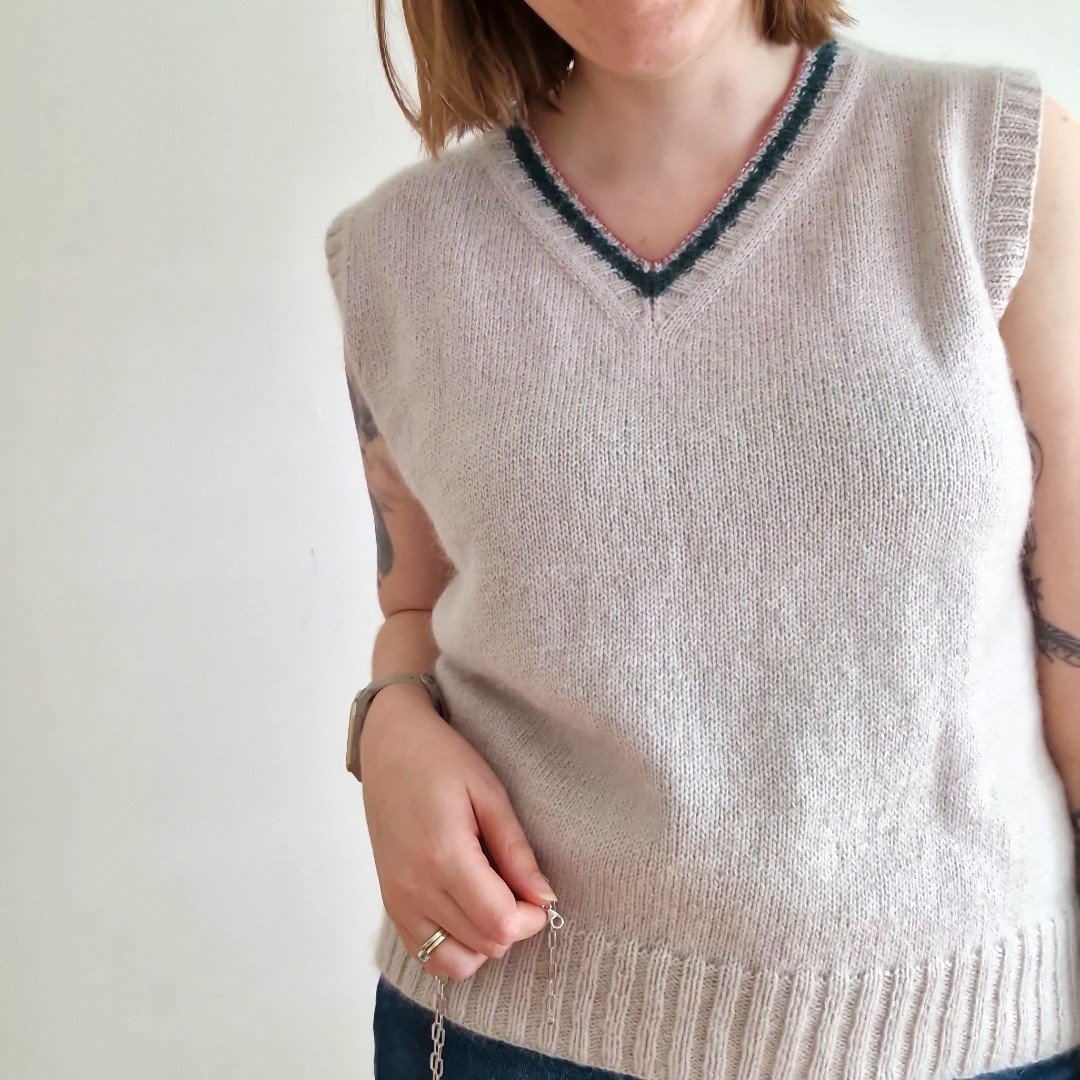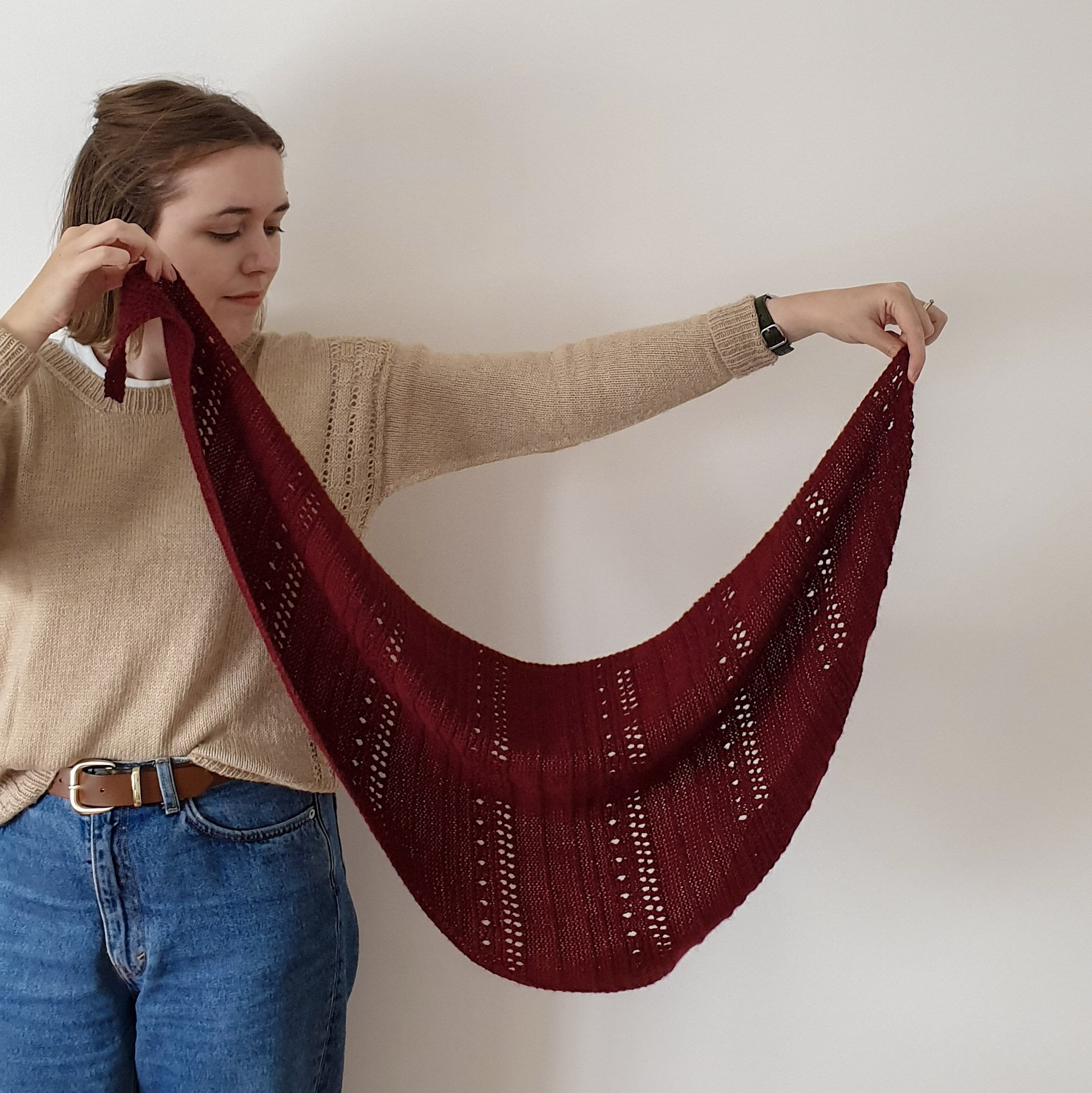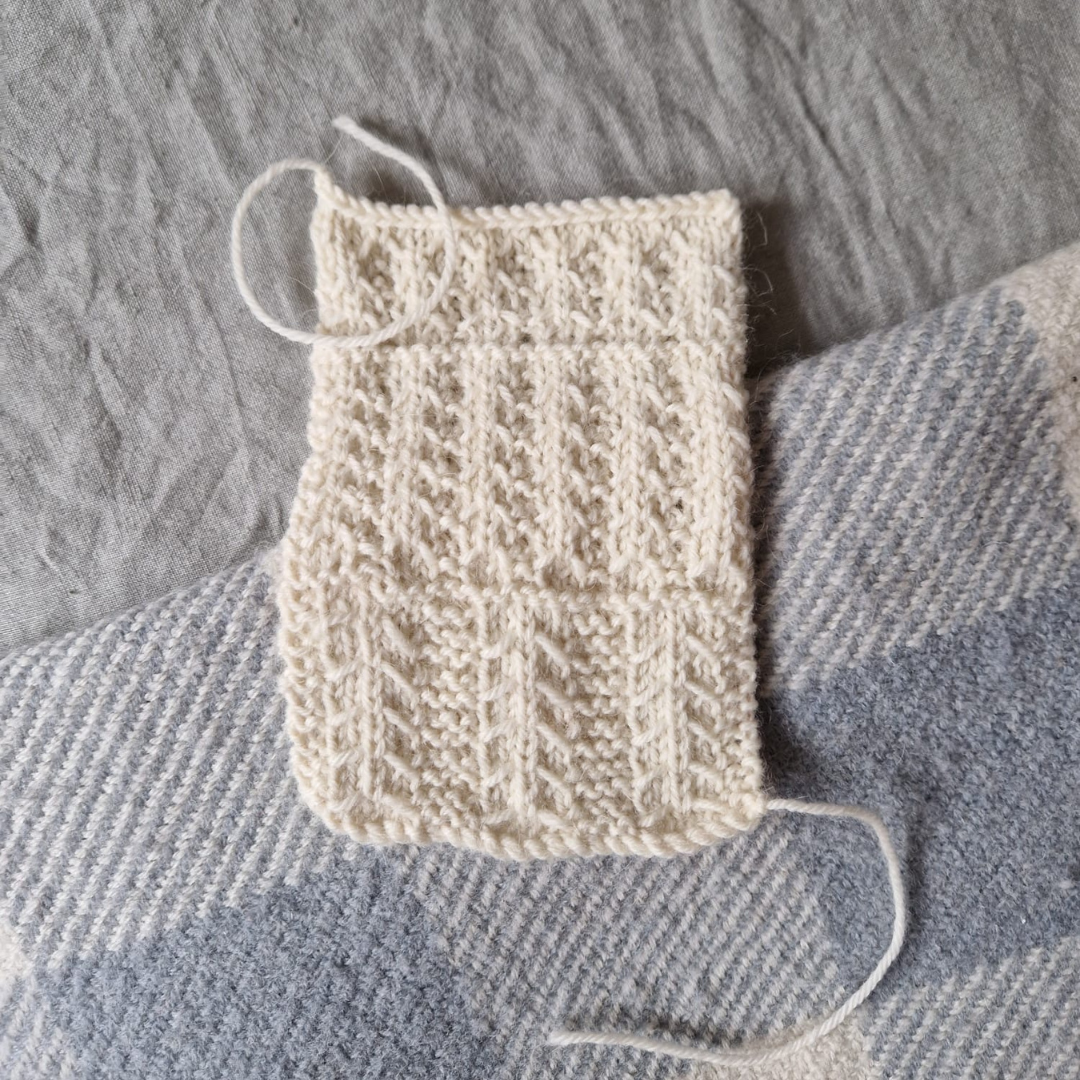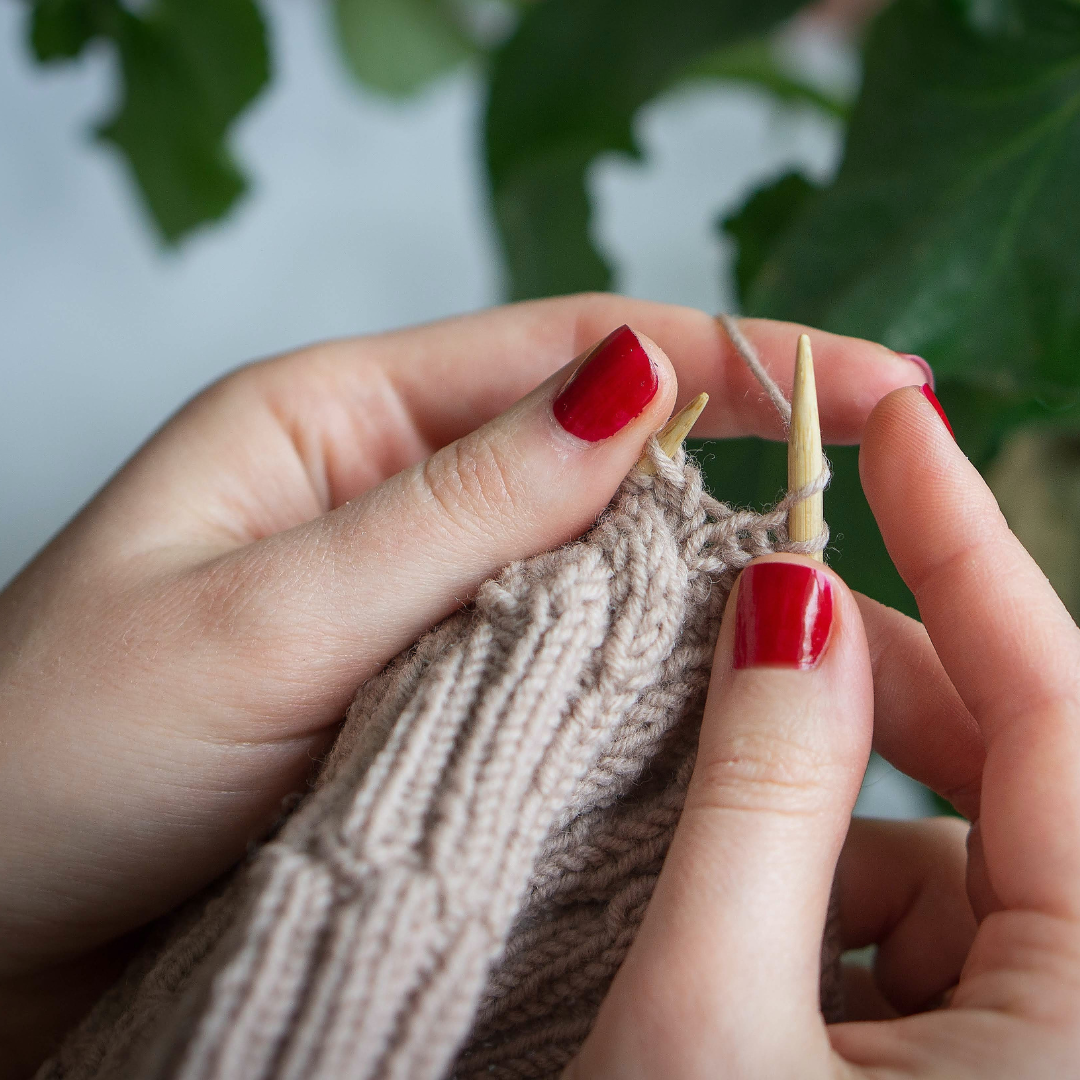7 Essential Elements Your Knitting Pattern Design Website Needs
While Ravelry and other pattern marketplaces are valuable platforms for knitting pattern designers, it’s not wise to make it your sole online shop. There are several reasons why I think this, but to summarise, it comes down to a lack of control over your branding, too much direct competition, and inadequate analytics.
Instead, I see Ravelry as a marketing tool akin to Instagram or Pinterest. I suggest you set up a personal online shop alongside those platforms, for better control and customer relationship building.
So, if you’re keen to craft a more professional online presence you have more control over, I’m here to help. In this blog post, I share seven essential elements you should include on your designer website, with examples from five popular knitting pattern designers you might be familiar with.
Image description: A woman is sat working on her laptop with text overlay saying, 7 Essential Website Features for Knitting Pattern Designers
7 Essential Website Features for Knitting Pattern Designers
1. Online Shop
As a knitting pattern designer, it’s so important that you have a dedicated space where you can showcase and sell your knitting pattern designs. By hosting your own online shop, you’ll be able to brand it how you want and also have access to far more sophisticated analytics, which you can use to help you sell more patterns.
Ysolda has a wonderful online shop where you can shop her patterns filtered by pattern category, yarn weight and the main technique used in the pattern. This is fantastic since she has nearly 200 listed there! Of course, if you don’t have many patterns for sale, there is no need for this level of filtration.
Her product pages include a range of helpful information, including the required yarn weight, sizing, and links to secure payment options. Links to skill-building tutorials for different knitting techniques required for the project are provided. Additionally, information on gauge, yarn suggestions, and needle requirements are listed.
I also like that they have a section for customer reviews, as well as provide information on the most up-to-date version of the pattern so that you can check it with your copy.
At the bottom of the page, she includes photos of other patterns that you might like based on this hat pattern. This is a great way to increase your customer's average spend when shopping with you.
Image description: A woman is sat learning a new knitting technique
2. Learning Resources
There are many benefits to creating learning resources for your customers. Not only does it help to reduce the amount of pattern support you need to do (very helpful when you only work on your designs part-time!), but it also helps to ensure your makers get a fantastic result after knitting your pattern.
Ysolda has a whole page of links to well-written tutorials that educate her community.
This can also be a fantastic way to bring in an additional income stream to your business. We all know that making a living as a knitting pattern designer can be incredibly difficult when you account for the time it takes to design a pattern and the low pricing used across the whole industry. Adding classes or workshops to your offerings could provide another income stream.
Denise from Bayron Handmade links out to her Skillshare class on Sewing Basics, with a little summary of what students will learn from it.
Jeanette Sloan also links out to in-person events where you can book to attend one of her workshops.
Jacqueline Cieslak also has a section on their website for online classes where students could sign up for their Knit to Fit Online Class. The class listings include lots of helpful information, including a detailed description of the class, mentioning what skills are required and what learners will gain.
There's a section for class policies covering cancellations, inclusivity, preparation, and scholarships, which helps set clear expectations and provides essential information upfront. Additionally, a preview link is provided for potential students to review homework and required materials before registering, aiding in informed decision-making.
3. Blog
Whilst I’m sure some would argue that it isn’t essential, I absolutely love having a blog to share inspiration and education with my readers. In my experience, it has been a beautiful way to build a community and helps to establish a loyal customer base.
Back when I wasn’t teaching knitting pattern design, I loved sharing a mixture of knitting tutorials, fashion inspiration for knitters, and updates on what I was designing or working on. To this day, I still get tons of traffic to these posts.
Ysolda is another designer who has been blogging for years. Her blog is full of free high-quality tutorials, along with occasional blog posts related to her knitting patterns, such as sharing photos of projects knitted by her test knitters.
Jacqueline Cieslak’s blog is absolutely glorious in terms of inspiration. They share roundups of projects knitted by their test knitters with really useful information about the sizing, ease, and any modifications made. They also sometimes suggest colour combinations, which I really like.
Image description: A woman is sat in a light, bright room, designing her website on a laptop.
4. Newsletter Subscription Form
I could wax lyrical about how important it is to build an email list as a knitting pattern designer, but in summary, it’s one of the only ways you can be sure your marketing will reach your audience. Algorithms might only show your social posts to 10% of your community, but your email will be delivered to almost everyone on your list.
You can use your email newsletter to keep your subscribers updated on new pattern releases, upcoming classes or workshops, and resources they might be interested in. It’s an incredibly powerful way to stay in touch with your community, and for me, it has been a game-changer.
I've been writing an (almost) weekly newsletter since the end of 2016, and over the years, I've developed some tried and tested themes that I often return to. In this blog post, I share tips I've learned along the way to help you jumpstart your newsletter and spread the word about your designs!
Bayron Handmade, Jacqueline Cieslak, Jeanette Sloan and Ysolda all have places where you can sign up for their newsletter, although admittedly, I’d love them to make a larger feature of it as they are not always easy to find.
5. Contact Information
As a business, it’s important that you provide clear contact information so that customers can come to you with questions and potential collaborators know how to approach you about upcoming projects.
You can keep this super simple with a contact page in your website’s footer, as PetiteKnit did here, or a simple contact form, as Jeanette Sloan did here.
6. Links to Social Media
Arguably, this is only essential if you actually use social media (which I don’t currently do). If you have an active social media presence, linking to your profile can help you build a community and stay in touch with your potential customers.
You can simply include an icon linking to your social media profiles in your footer or even share a little gallery of your social media posts directly on your website to encourage readers to click through. There are good examples of this on PetiteKnit and Ysolda’s home pages.
7. About Page
You’d be surprised by how much traffic you will get on your About page! It’s a great place for your community to learn about who you are and what you want to do in the knitting world. It can be lovely to share personal anecdotes or photos here to help you build trust and connect with your audience on a more personal level.
Jeanette Sloan’s About page is a fantastic example of this, as it strikes a nice balance between personal storytelling and showcasing her professional experience.
Conclusion: 7 Essential Elements Your Knitting Pattern Design Website Needs
As you can see, you don’t need much to create a fantastic website for your knitting pattern designs. With an online shop, spaces where readers can learn from and about you, and ways for your audience to stay in touch with you, you will have everything you need.
If you are a new designer, I encourage you to prioritise building your website. The rewards will be worth the time and effort you invest in it.
What are the biggest things holding you back from creating a website for your design business? Share your experiences or ask questions in the comments, as I’d love to chat with you!























